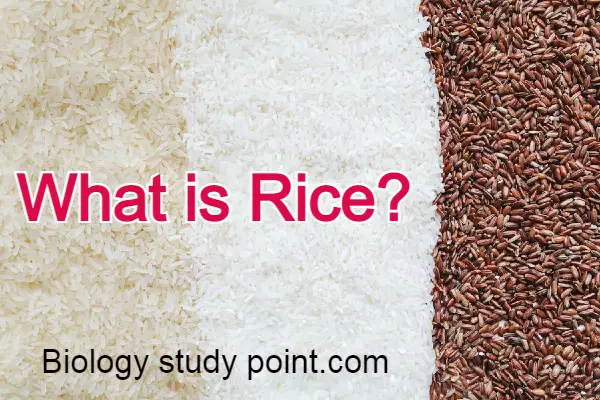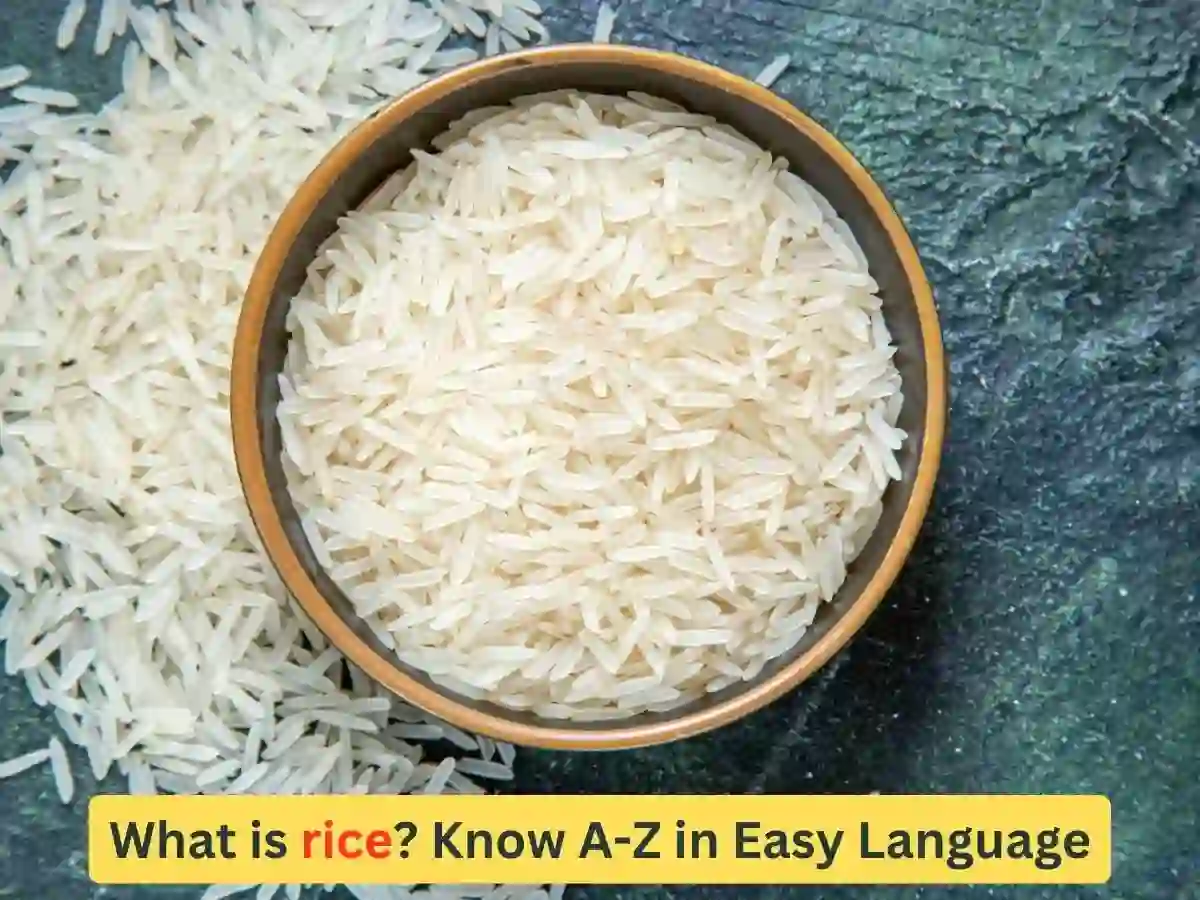Hello friends, welcome to our new article, friends, today we are going to talk about what is rice, which we use every day to eat, just like saying that without Rice, we do not fill our belly.
Today we will learn from which family and genus it is, where it originated, and in which countries and regions it is produced the most. So let’s start
What is Rice?
Rice, an important source of food for mankind, is obtained from the genus Oryza sativa of the family Gramineae. This is presumably of eastern origin, although there have been advocates of an American center of domestication. Nearly half the world’s population subsists wholly or partially upon rice.
The rice plant is a large annual grass, growing to a height of 2 to 4 feet. The floral access consists of numerous branches, each ending in a grain. The d detached grain with The husk is known as paddy. There are innumerable varieties of rice in India.
Rice chiefly grows in China Jawa and the Indian Ocean. Indian chief, center of rice cultivation. In India, Madras Bihar West Bengal Uttar Pradesh Madhya Pradesh Odessa Assam Maharashtra, and Punjab are the main cultivating centers.
Rice is characteristic of the Tropical plant, and it requires hot and moist climatic conditions. A temperature range of 20 – 25 degrees Celsius is required by the plant during the growing stage and bright Warm sunshine is a must at the time of maturity.
The water requirements of the plant are high, so much so that the seeding needs to be submerged under 15 to 20 CM of water after 60 to 90 days of sowing.
Rice grows best in regions having 120 to 150 cm of annual rainfall and in alluvial or clayey loams with high nitrate contents.

Rice crop is cultivated under wet or lowland dry or upland and semi-dry conditions. The wet rice variety popularly known as a man has a lifespan of 140 to 170 days duration and grows in low areas with Plenty of water throughout the year.
The up plant rice is also known to grow in rained areas with 90-120 days duration, whereas the semi-dry rice of Boro is grown as an intercrop.
Rice cultivation follows double crop practice, i.e. short-duration rice is followed by a medium or long-duration variety or vice versa, depending on the season and availability of water.
The rice crop grows under a variety of environmental conditions, involving a number of interesting and intricate problems of Physiological adaptation. Cultivation involves sowing, harvesting, and threshing.
Sowing –
Prior to sowing, The Field is plowed thoroughly, and then the seeds are sowed in seed-beds. The temperature requirement for germination ranges from 6 degrees to 47 degrees Celsius.
Rice seeds can germinate underwater under anaerobic conditions and when the plants are 9 to 10 inches tall they are transplanted to a field where they are flooded and completely immersed in water.
Aus or upland rice (neutral variety) is Sown in May – June, a man or lowland rice (short day variety) Is sown in December and January.
Harvesting –
On maturity, the plants turn yellow and are harvested. The variety is harvested in September and October and the amount is harvested in November and December, whereas the borrow variety is harvested in March and April.
The plants are harvested by cutting their stalks and pilling them up for drying. The grains are kept intact within their husk and are separated only before use.
Threshing –
The grains enclosed within the husk are commonly known as Dhan. For domestic use, the Dhan Threshed by pounding the Husked grains with a wooden mallet and then winnowed.
The resultant grain, though somewhat coarse, has a high nutrient content of protein fat, and starch. Commercial rice is prepared by threshing and winnowing machines and finally scoured, polished, and graded. The rice’s tough fine loses its outer nutritive content.
Chemical constituent. Rice has a considerably high nutrient content with about 90% carbohydrate, 8-10% protein, 1% fats, and about 1% mineral matter.
Phosphoric acid and Phosphoric acid and potash are also present.
Rice forms are stapled from food in many countries like China, Japan, India, Korea, etc. The various uses of rice are –
- It is the most common form of food consumed by millions all over the world.
- The dried stalks, known as rice straw, are commonly used in the manufacture of straw boards, paper, and mats.
- An important oil prepared from bran, known as bran oil, is widely used in making soaps and cosmetics, as an anti-corrosive agent, lubricant, and as a rust-resistant compound.
Friends, I hope that you have liked the information given about What is Rice? If you have liked this given information, then please share it as much as possible.
Thank you so much
Also read –
